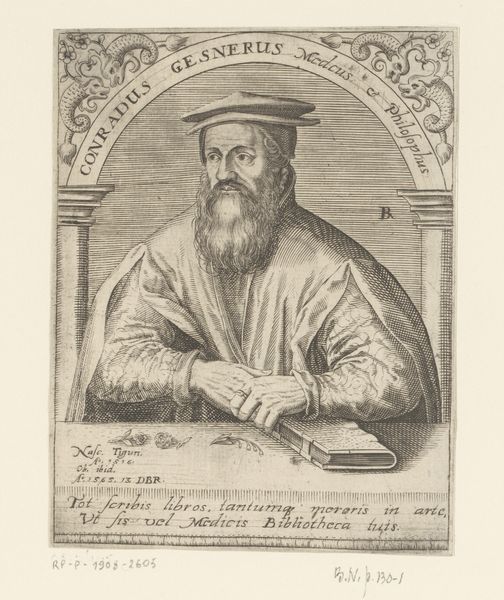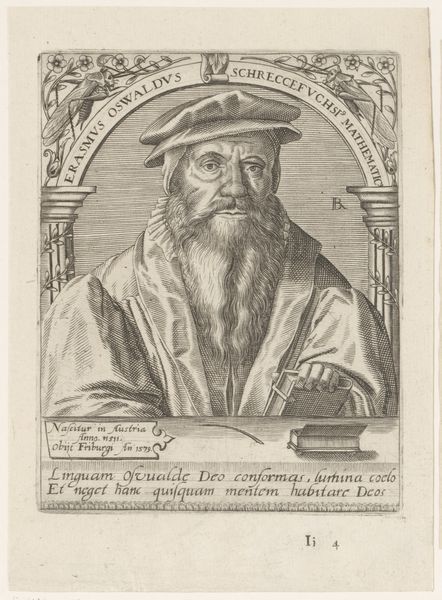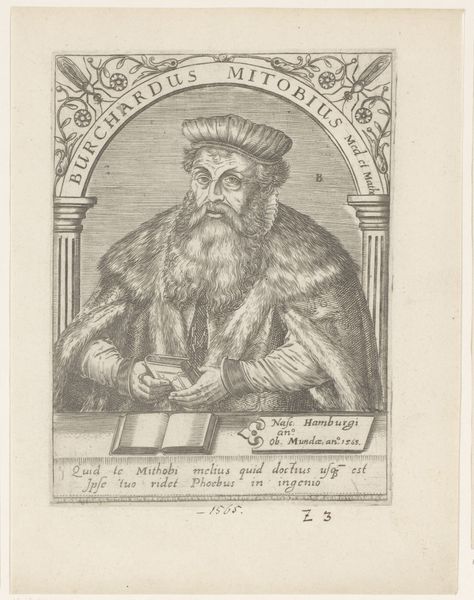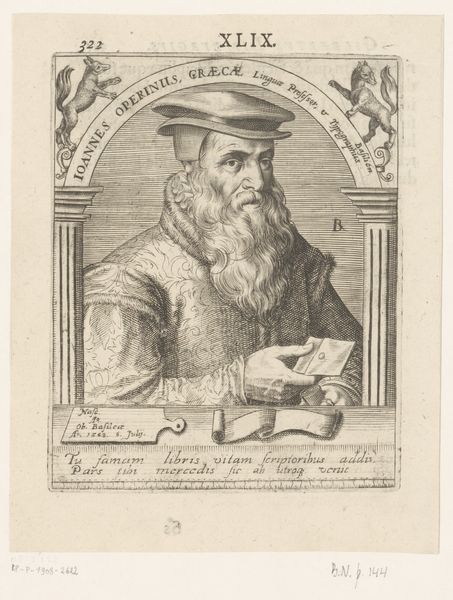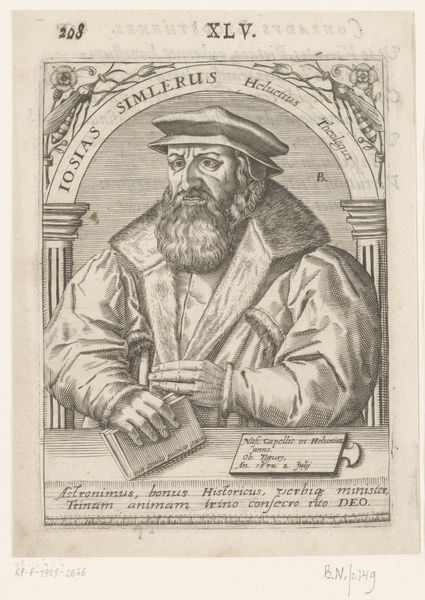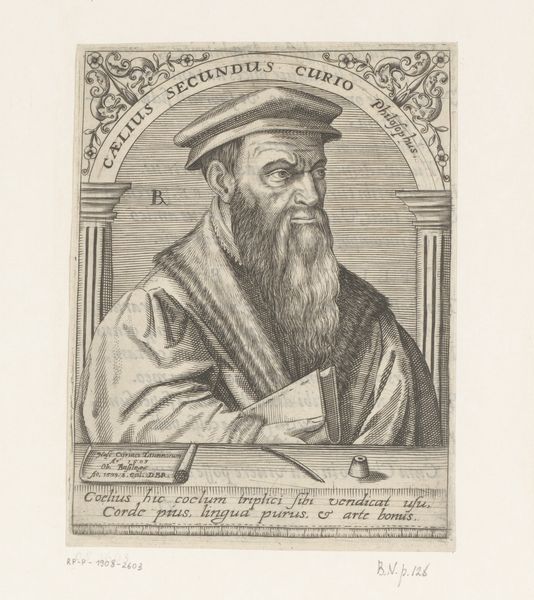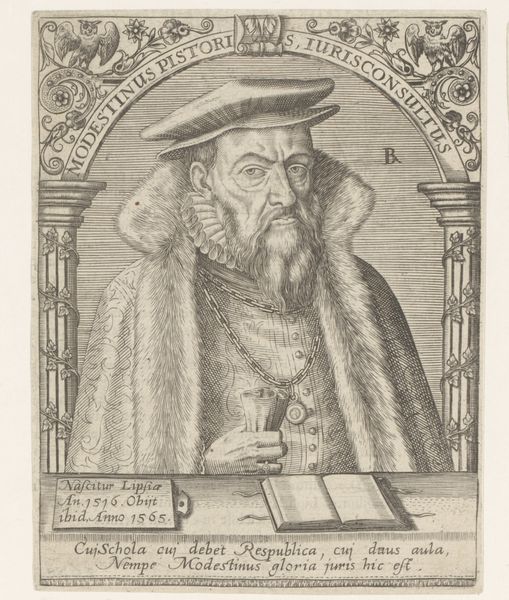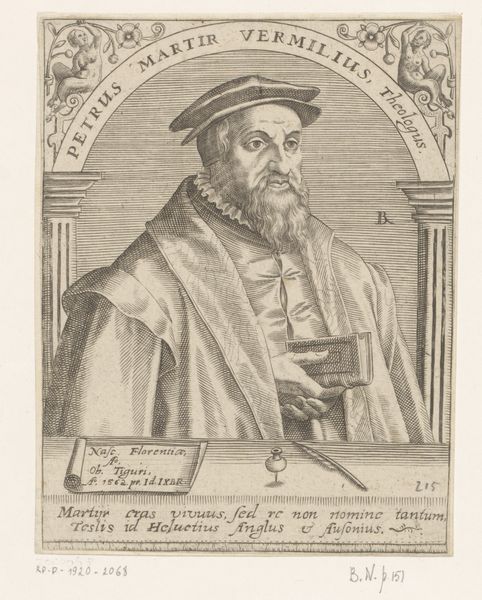
engraving
#
portrait
#
book
#
old engraving style
#
11_renaissance
#
history-painting
#
northern-renaissance
#
academic-art
#
engraving
Dimensions: height 138 mm, width 109 mm
Copyright: Rijks Museum: Open Domain
Curator: This engraving from the late 16th century, circa 1597-1599, presents us with a portrait of Leonhart Fuchs, now residing here at the Rijksmuseum. Editor: My first impression is one of somber authority. The intricate details achieved through engraving give it a feeling of meticulousness, almost scientific. Curator: Absolutely. The engraving process itself, demanding precision and labor, aligns with the intellectual gravity of Fuchs. Who was a renowned physician and botanist. Looking closely, we see he holds a sprig, a clear reference to his botanical work. Editor: Yes, and that plant points towards something fundamental here; that as much as intellect abstracts from nature, nature as material keeps asserting its presence in a field otherwise inclined to theoretical elaboration. It's present materially here in the plant itself, and represented in those hefty, almost geological-looking books. It speaks of an intimate knowledge through observation and labor. Curator: Precisely. Fuchs, during a time rife with medical and scientific upheaval, played a pivotal role in connecting textual knowledge with empirical observation. He attempted to correct errors inherited by traditional medicine. Editor: What do you mean? Curator: Well, he championed direct study of herbs and plants as the basis for pharmacology. It's radical when you think of it, it decenters older patriarchal knowledge in favor of, in essence, evidence found in nature itself. Editor: Indeed, by depicting Fuchs with both the tools of scholarship and the symbolic plant, the engraving highlights the merging of intellectual and practical labor and that friction of going out and discovering nature from just sitting in a library. We might look at it from the perspective of current intellectual debates, who gets access to education, scientific data, who is being left out. Curator: I see how your thinking on materiality directs that! Editor: Yes, focusing our thinking on what kind of body had access to that era’s institutions. This resonates strongly even today, as many continue advocating for inclusivity and accessibility in educational settings, scientific spaces, in medicine. It brings it back into the social realm. Curator: And considering it as a historical image made within a specific socioeconomic system gives this artwork a special depth for the audience. Thank you for sharing that perspective! Editor: My pleasure. I think paying attention to the actual texture of knowledge work and book-making lets the image vibrate in new and unexpected directions.
Comments
No comments
Be the first to comment and join the conversation on the ultimate creative platform.
